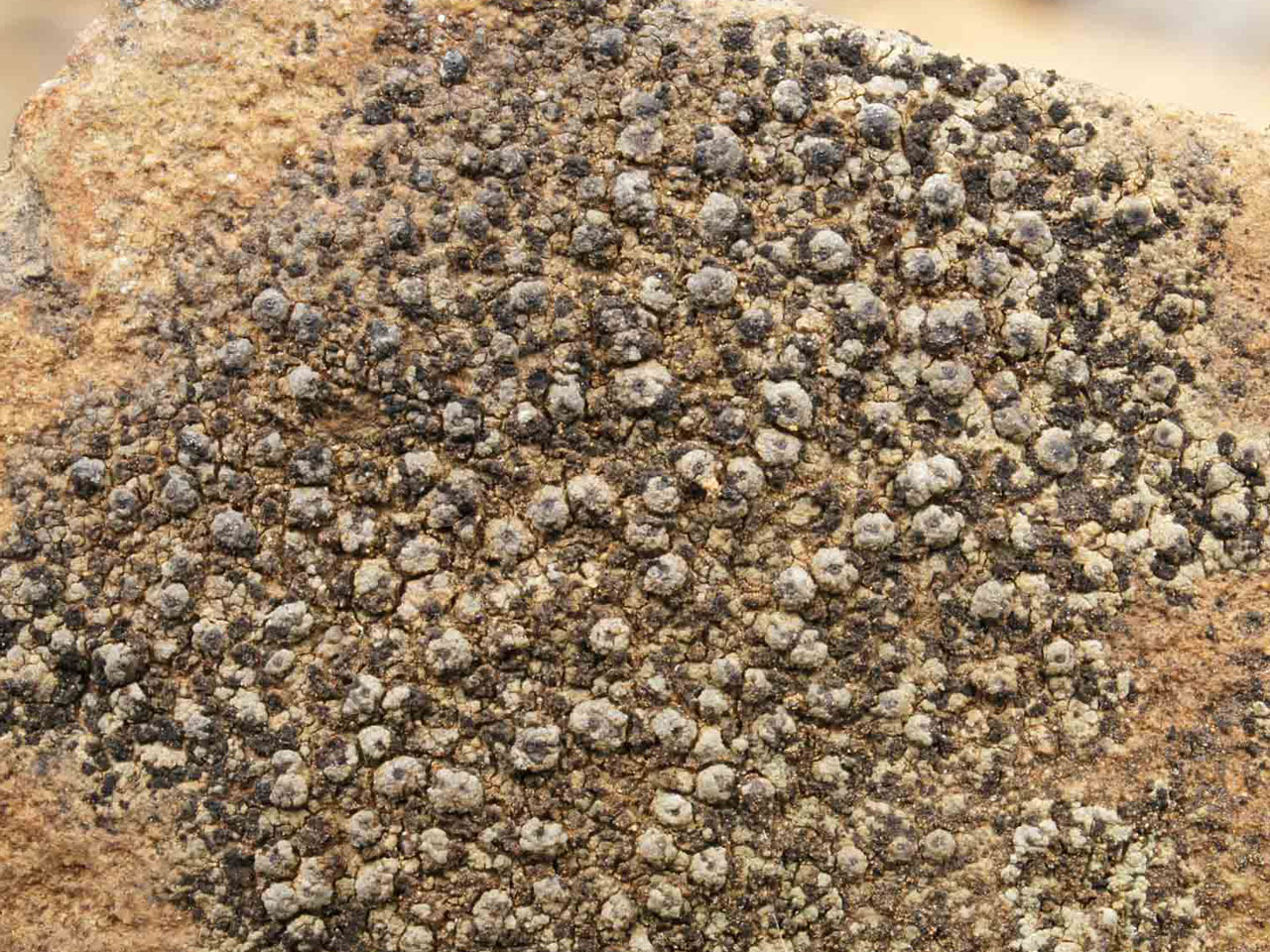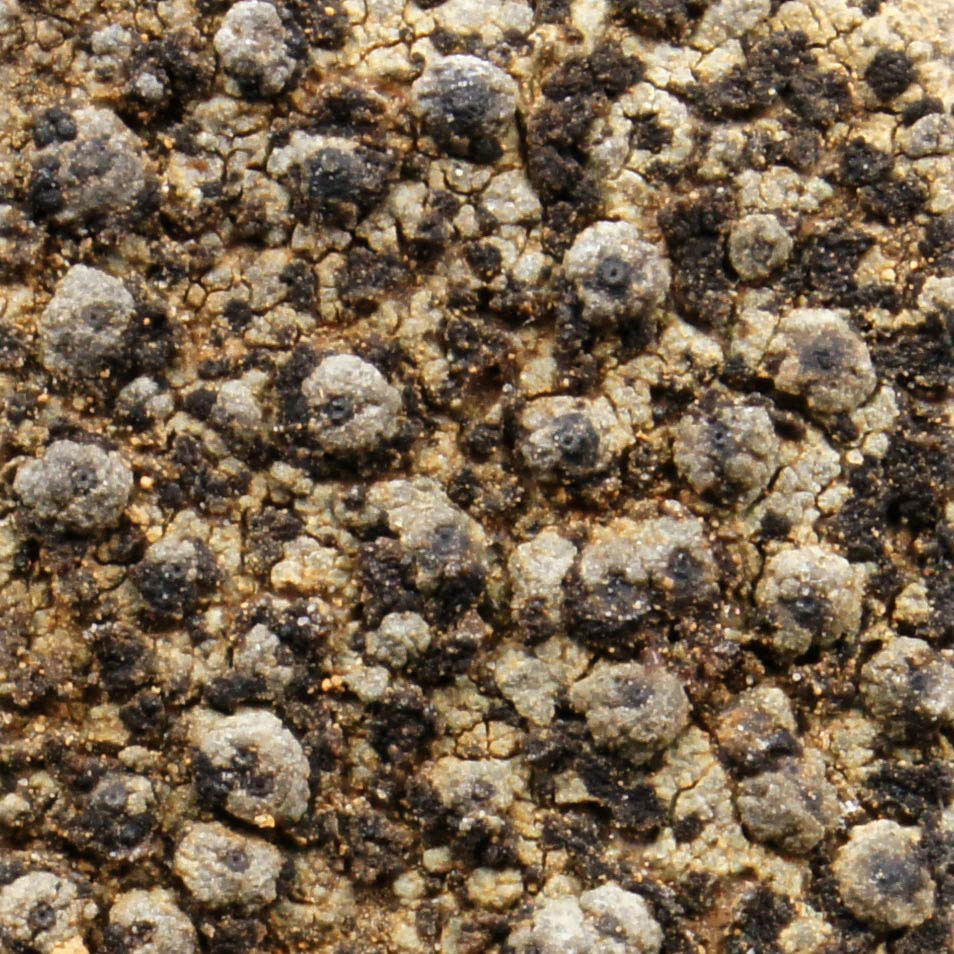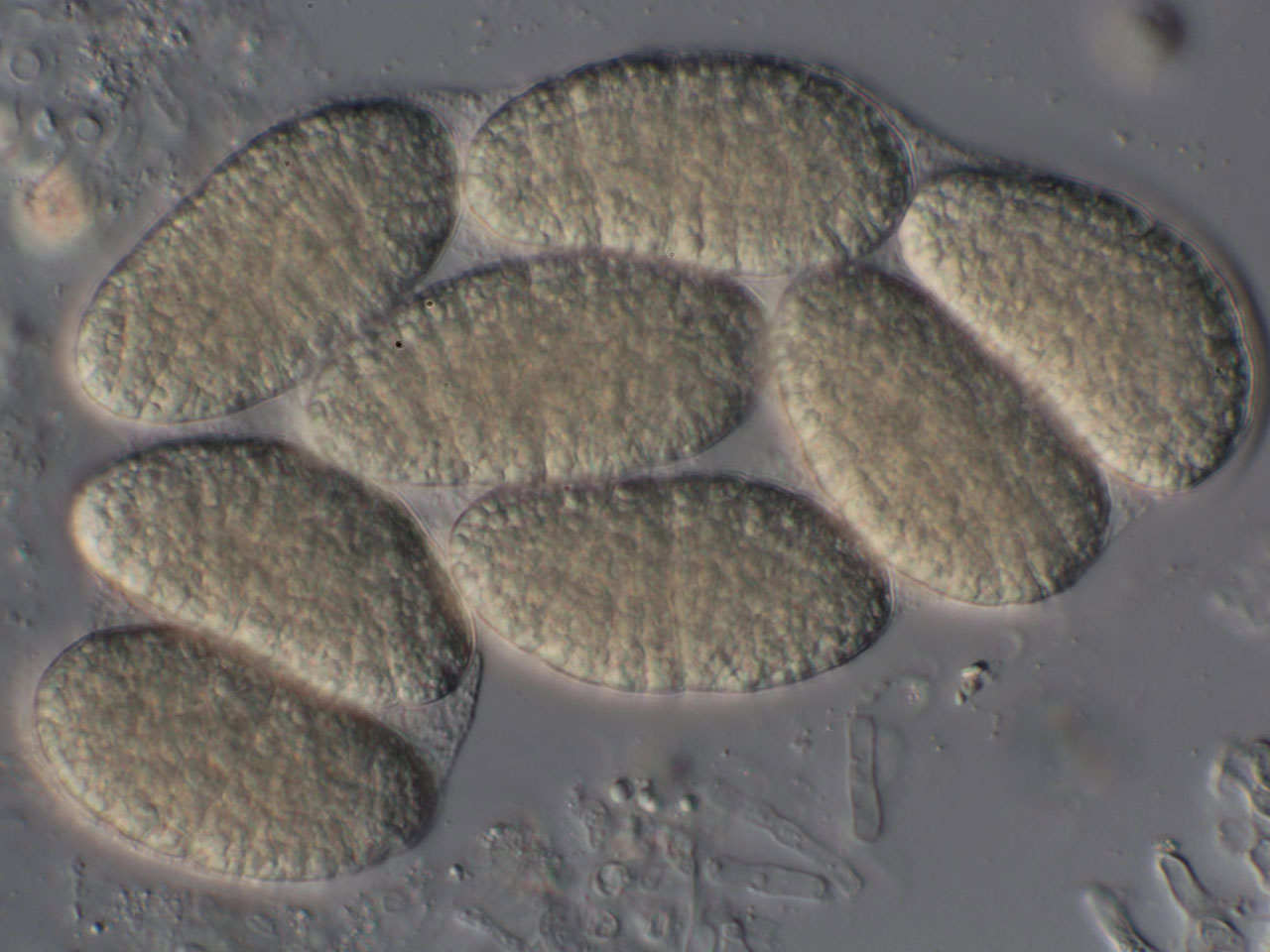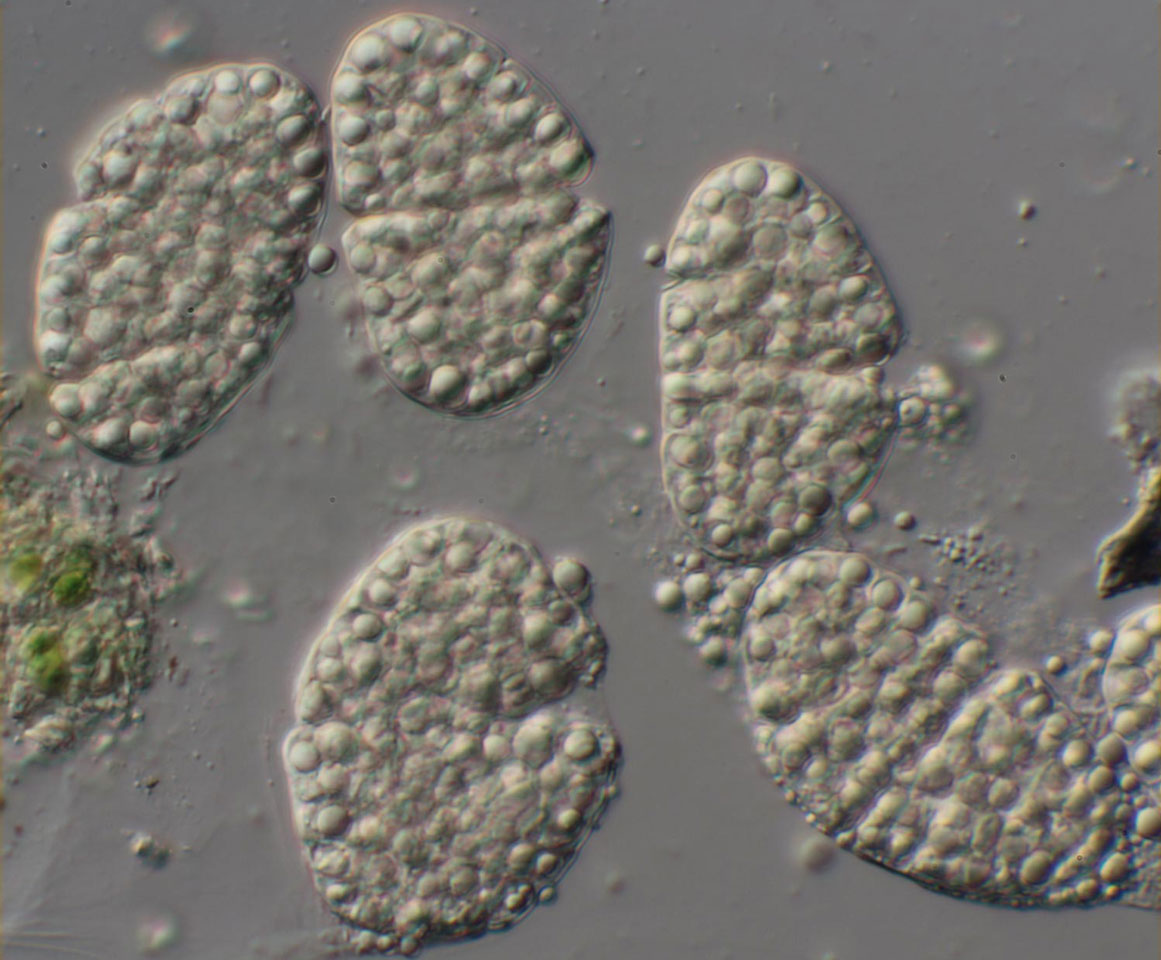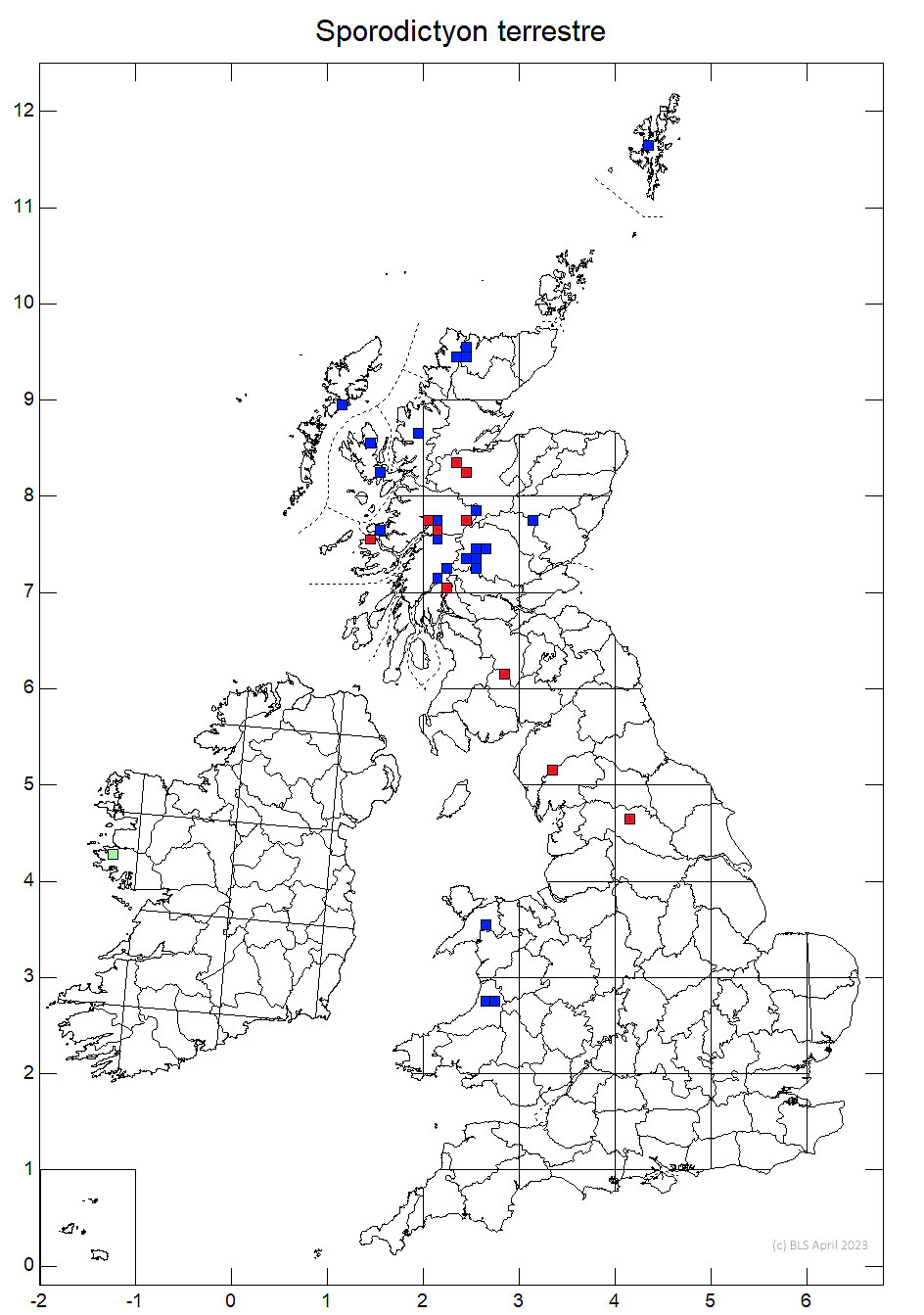Sporodictyon terrestre
Rare on upland damp calciferous to neutral or slightly acidic siliceous rocks, occasionally on soil, stones and bryophytes. Distinguished from Sporodictyon cruentum and S. schaererianum by the ascospores which are ± colourless when mature and healthy. See FGBI - Sporodictyon terrestre for more pictures
Thallus superficial, sometimes slightly uneven but usually verrucose, of indistinct areole-like units 80–300 μm diam., pale grey to brown; cephalodia frequent. Perithecia forming projections 0.4–0.8 mm diam., covered by an uneven to verrucose layer of thallus, or this layer partly lost. Ascospores muriform, colourless or faintly yellowish, with little or no colour visible in the cell walls except in withered and overmature spores, (39–) 51–68 (–81) × (22–) 26–34 (–40) μm, length/width ratio (1.5–) 1.7–2.3 (–3).
Distinguished from Sporodictyon cruentum and S. schaererianum by the ascospores which are ± colourless when mature and healthy. S. cruentum also differs in the absence of cephalodia; the thallus of that species is often darker and smoother than in S. terrestre, but the two species overlap in these features.
On damp calciferous to neutral or slightly acidic siliceous rocks, occasionally on soil, stones and bryophytes; upland
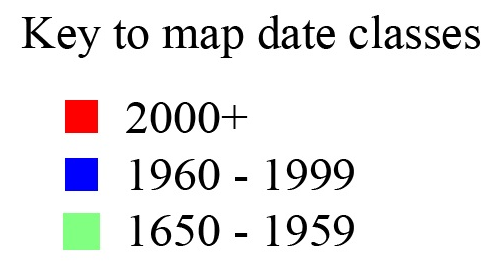
Rare. N. England, N. Wales, Scotland, Ireland.
Habitats include old metal mines and small stones and soil where vegetation succession and overgrowth is a risk. No recent records from Wales and very rare south of the Scottish Highlands.
Britain: Near Threatened
Scotland: Priority Taxon for Biodiversity in Scotland
Wales: Vulnerable
Orange, A., Cannon, P., Prieto, M., Coppins, B., Sanderson, N. & Simkin, J. (2023). Verrucariales: Verrucariaceae, including the genera Agonimia, Atla, Bagliettoa, Catapyrenium, Dermatocarpon, Endocarpon, Henrica, Heteroplacidium, Hydropunctaria, Involucropyrenium, Merismatium, Nesothele, Normandina, Parabagliettoa, Placidopsis, Placidium, Placopyrenium, Polyblastia, Psoroglaena, Sporodictyon, Staurothele, Thelidium, Trimmatothele, Verrucaria, Verrucula, Verruculopsis and Wahlenbergiella. Revisions of British and Irish Lichens 31: 1-104.
Text by Neil Sanderson based on Orange et al (2023)
